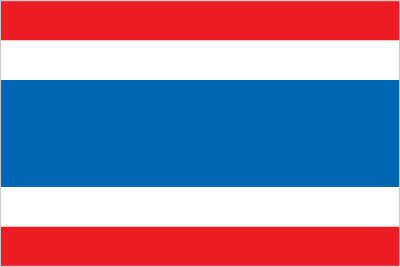
With a well-developed infrastructure, a free-enterprise economy, generally pro-investment policies, and strong export industries, Thailand achieved steady growth due largely to industrial and agriculture exports - mostly electronics, agricultural commodities, automobiles and parts, and processed foods. Unemployment, at less than 1% of the labor force, stands as one of the lowest levels in the world, which puts upward pressure on wages in some industries. Thailand also attracts nearly 2.5 million migrant workers from neighboring countries. The Thai government in 2013 implemented a nation-wide 300 baht ($10) per day minimum wage policy and deployed new tax reforms designed to lower rates on middle-income earners. The Thai economy has weathered internal and external economic shocks in recent years. The global economic recession severely cut Thailand's exports, with most sectors experiencing double-digit drops. In late 2011 Thailand's recovery was interrupted by historic flooding in the industrial areas in Bangkok and its five surrounding provinces, crippling the manufacturing sector. The government approved flood mitigation projects worth $11.7 billion, which were started in 2012, to prevent similar economic damage, and an additional $75 billion for infrastructure over the following seven years. This was expected to lead to an economic upsurge but growth has remained slow, in part due to ongoing political unrest and resulting uncertainties. Spending on infrastructure will require re-approval once a new government is seated.
$673 billion (2013 est.)
country comparison to the world: 25
$654 billion (2012 est.)
$614.2 billion (2011 est.)
2.9% (2013 est.)
country comparison to the world: 119
6.5% (2012 est.)
0.1% (2011 est.)
$9,900 (2013 est.)
country comparison to the world: 120
$9,600 (2012 est.)
$9,100 (2011 est.)
agriculture: 12.1%
industry: 43.6%
services: 44.2% (2013 est.)
13.2% (2011 est.)
2.2% (2013 est.)
country comparison to the world: 79
3% (2012 est.)
39.38 million (2013 est.)
country comparison to the world: 17
agriculture: 38.2%
industry: 13.6%
services: 48.2% (2011 est.)
0.7% (2013 est.)
country comparison to the world: 3 0.7% (2012 est.)
tourism, textiles and garments, agricultural processing, beverages, tobacco, cement, light manufacturing such as jewelry and electric appliances, computers and parts, integrated circuits, furniture, plastics, automobiles and automotive parts; world's seco
-3.1% (2013 est.)
country comparison to the world: 185